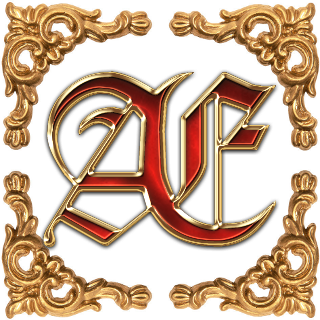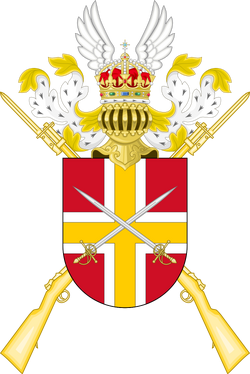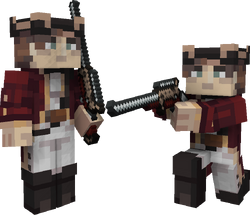The Armée Imperiale is the official denomination of the army of the Empire of Castaire since its establishment. It consists of the joined forces of the former independent states which now belong to the Empire.
The Supreme Leader is the Empereur, currently Stéphane IV. The different contingents of the constitutional states were, as of the military convention, under Castairian command. The only exception is the army of Gardelegen, which concluded a treaty with Castaire.
The army of Gardelegen remained under the local command of the Grand Duke in peaceful times and was administrated seperately by their own ministry. All the other stately contingents are directly integrated into the imperial administration.
Nearly 1.2% (planned 750 thousand people) of the population of Castaire is participated in the Armée Imperiale.
Overview
History
As threatening nations neighboured the Empire since its establishment, an important thought was to conceive a permanently working system of defending the imperial borders against foreign ambitions. Mercenary companies were often hired when in conflict with other nations, but there were severe problems regarding the supply of the troops, often ending in depredation of territories. Thus, several attempts to create standing armies were made. In Castaire, Constant IV introduced this conception in 1423, but due to his untimely passing a year later wasn't able to see the success of it.
Regarding the Réforme de l'Armée de 1423, a permanent army was founded, consisting of regiments of each duchy. The central government of Castaire was in charge of paying the sold, but the actual billeting and maintenance were task of to duchies. This system was used for around 250 years, but was abolished by the Réforme de l'Armee de 1688 under Nathanaël I. His staff conceived a combination of permanent conscription for 2 years of active service and further 10 years of reserve service and a defined area to draft within. In case of war this would allow the Empire to quickly mobilize the active army within several days and to prepare the reserve within a week. The organization evolved further as a general staff was founded under Nathanaël II to conceive battle tactics, choose places for camps etc. to support the monarch. Following the evolution of war from merely confined skirmishes to extensive theatres, the general staff became an irreplacable part of the castairien military.
Leading Principles
Structure
The Armée Imperiale consists of more than 750 thousand people. Every territory, region, county or duchy has to provide a certain amount of soldiers regarding to their population. These numbers are solidified by the amount of divisions each duchy has to support. These amount to 60 divisions for the whole Empire, making up for 30 corps in times of war. The Supreme Command is subdivided into 3 army commands, which are further divided into (currently) 15 army corps, whose amount may be expanded in times of war. Those corps are always subordinated to Lieutenant-Générals. In case of war, different corps may be combined to form armies, which then fight at different locations as unitary military power. Even the corps are mainly strategic units and thus in peaceful times non-existent. Former wars required the combinations of at least two corps into an army. Nonetheless, the training of the army takes place as set in the division structure, so every division has a specific location in the Empire and thus a specific drafting pool, from which men are recruited. For example, the I. Division is set in Grand Lucrécy (the capital itself and subsequent territories).
| Armée Impériale | |||||||
| Denotation | Leader | Infantry | Composition | Cavalry | Composition | Artillery | Composition |
|---|---|---|---|---|---|---|---|
| Compagnie | Capitaine | 200 men (20 off.) |
6 off., 14 sub-off., 4 tambours, 175 soldiers, 1 barber surgeon |
100 men (12 off.) |
4 off., 8 sub-off., 1 trumpeteer, 86 soldiers, 1 flags smith | Foot artillery: 6 cannons, 150 men, 40 horses; Riding artillery: 6 cannons, 150 men, 120 horses | / |
|
Bataillon (Inf. & Art.) Escadron (Cav.) | Commandant | 800 men (80 off.) |
4 companies of infantry: 24 off., 56 sub-off., 16 tambours, 700 soldiers, 4 barber surgeons | 200 men (24 off.) |
2 companies of cavalry: 8 off., 16 sub-off., 2 trumpeteers, 172 soldiers, 1 flags smith, 1 barber surgeon | 30 cannons, 750 men, 280 horses | 4 foot artillery companies and 1 riding artillery company |
| Regiment | Colonel | 2,800 men (280 off.) |
2 bataillons of line infantry, 2 companies of grenadiers and 1 bataillons of light infantry: 84 off., 196 sub-off., 56 tambours, 1400 inf., 350 grenadiers, 700 light inf., 14 barber-surgeons | 1,000 men (120 off.) |
5 escadrons of cavalry: 40 off., 80 sub-off., 1 drummer, 9 trumpeteers, 860 soldiers, 5 flags smiths, 5 barber surgeons | / | / |
| Brigade | Brigade-Géneral | 8,400 men (840 off.) | 3 regiments of infantry | 3,000 men (360 off.) | 3 regiments of cavalry | 90 cannons, 2,250 men, 840 horses | 3 bataillons |
| Division | Majeur-Genéral | 25,800 men, 2580 off.; 2 brigades of infantry, 3 brigades of cavalry and 2 brigades of artillery | |||||
| Corps | Lieutenant-Géneral | 51,600 men, 5160 off.; 2 divisions | |||||
| Armée | Géneral | 103,200 men, 10,320 off.; 2 corps | |||||
| Groupe des Armées | Marechal de l'Empire | varying strength, dependent on campaign | |||||
| Commandement Suprême | Empereur | whole armed forces, approx. 800,000 men within 15 corps and several other military facilities | |||||
Branches
As of the technical advancement, there are several new branches established in the army, especially regarding to the relatively new aspect of train transportation. Furthermore, several former existing units were enlarged and supported with new devices, for example the pionier corps.
Armament and Equipment
Uniform
Infantry
The standard infantry uniform consists of a dark red long-skirted coat, white waistcoat and breeches and a black, golden-trimmed tricorn.
Cavalry
Artillery
Ranks
| General Officers | Command Level |
|---|---|
| Maréchal d'Empire | |
| Général | Armée |
| Lieutenant-Général | Corps |
| Majeur-Général | Division |
| Brigade-Général | Brigade |
| Senior Officers | |
| Colonel | Regiment |
| Lieutenant-Colonel | Bataillon |
| Commandant | |
| Junior Officers | |
| Capitaine | Compagnie |
| Lieutenant | Peloton |
| Officer Cadets | |
| Aspirant | - |
| Élève Officier | - |
| Sub-Officers | |
| Adjudant-Chef | - |
| Adjudant | - |
| Sergent-Chef | - |
| Sergent | - |
| Élève Sous-Officier | - |
| Compagnies | |
| Caporal-Chef | - |
| Caporal | - |
| Soldat | - |
The system of castairien ranking is mainly based on the old Chastain System, which used to subdivide the different main ranks like the Généralité into further subranks to have a special officer for any army formation.
The highest rank is Maréchal d'Empire, Marshall of the Empire, and is mainly conceived for highly experienced tactitians and former generals who served the Empire in great manner. The marshall is one of the ranks allowed to command whole armies. His main purpose is to represent the Empereurs command when being absent.
The second highest rank is Général, whose function is very similar to its higher ranked counterpart, though a marshall often commands different generals.
The Lieutenant-Général is similar to a corps commander and is thus allowed to command those.
The Majeur-Général is similar to a division commander and might command those and subordinated army structures.
The lowest general rank is the Brigade-Général, whose position is conceived as commander of brigades.
The regular troops, organized in regiments, are commanded by a Colonel, whilst the subordinated battaillons follow a Lieutenant-Colonel or an Commandant. The different companies are then subordinated to a Capitaine and his staff.


